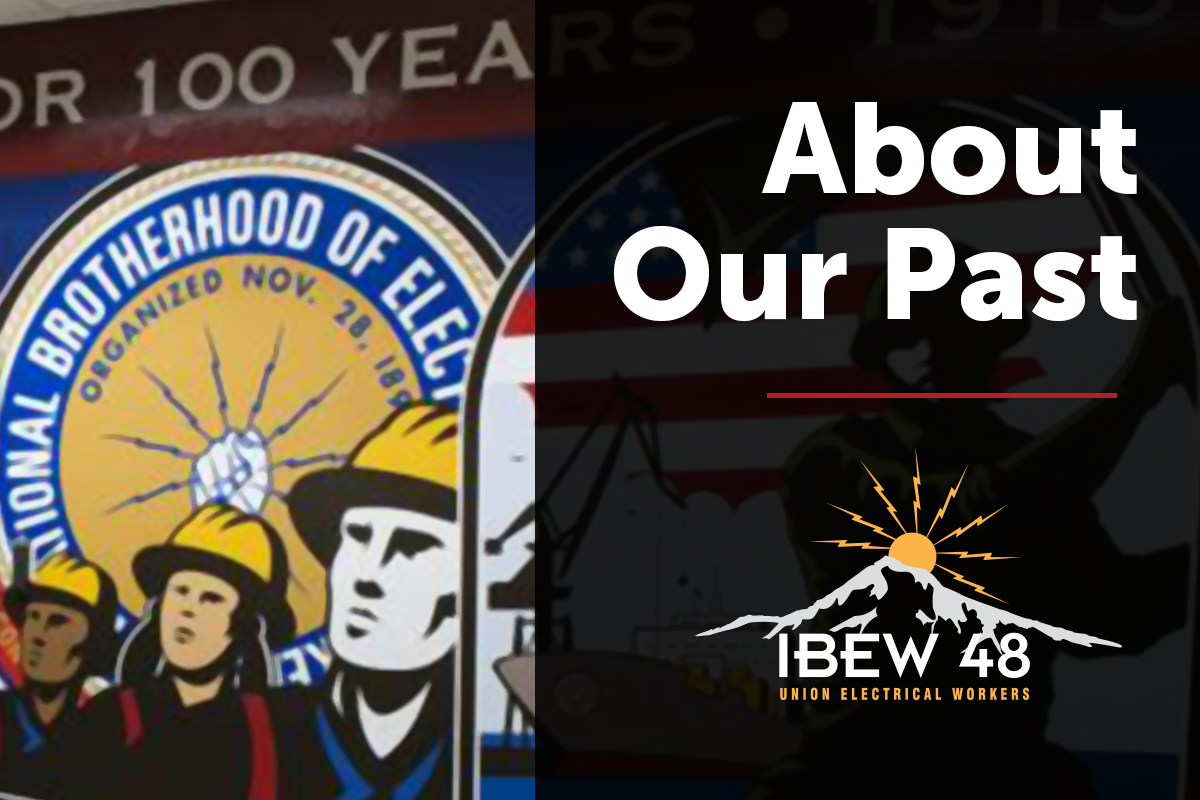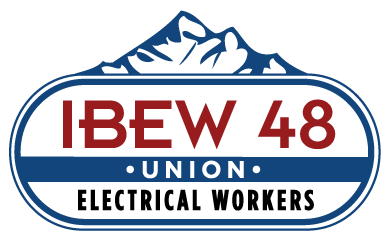About Our Past
Aug 12, 2020 - by: outlier-admin

The following article was originally published in NW Labor Press in June 2020. It was written by IBEW Local 48 member Donny Swanson.
IBEW members have much to be proud of. Many are welcome, regardless of identity, to take advantage of the best training, high pay, access to quality health care and a comfortable pension. For many, it offers a new lease on life (myself included) and a means to provide for a family (mine, too).
Sadly, for some time, Unions excluded black Americans, a pattern that would for many years contradict the AFL’s proclamations of interracial Unionism.
Image vs. Reality
The story of how Unions addressed the position of black Americans in the workplace can be written in more ways than one. In one version, much ado is made of the AFL-CIO’s unyielding support of the Civil Rights movement, particularly of UAW president Walter Reuther’s advocacy of MLK and of his support of the NAACP and Caesar Chavez. In another version, a chorus of criticism from within the labor movement is given a fair hearing. A. Philip Randolph and Herbert Hill, two among many exasperated by AFL and AFL-CIO leadership for its failure to confront racism both within its own ranks and in its affiliated Unions, lamented the “profound disparity between the public image…and the day-to-day experience of many [black] workers.”
This disparity dates back to 1899, when the AFL admitted to membership the rigid “lily-white” International Association of Machinists, even though the AFL’s policy prohibited such Unions. Throughout the first-half of the century, such reversals would belie official AFL policy.
Whatever the AFL’s official stance on race at the turn of the century, that of its President, Samuel Gompers, was straightforward. Among his opinions, Gompers promoted the Chinese Exclusion Act and favored a ban on immigration from Eastern Europe. Most egregiously, in 1917 Gompers helped instigate the East St. Louis Massacres. This incident was one of America’s worst labor riots, during which white-led mobs pillaged black neighborhoods, leaving over 200 dead and many more homeless. Gompers was unapologetic.
Even under William Green’s leadership the AFL continued to tolerate “Jim Crow” auxiliary locals, perhaps the most enduring source of contention among labor activists. For background: AFL affiliates established separate "auxiliaries” for black workers, in which blacks were denied full Union membership and access to skilled, high-paying jobs, denied the right to vote on matters that affected them and excluded from the collective bargaining process. Instead, black workers were relegated to the most menial, lowest-paying, filthiest jobs, and they watched as their skilled jobs were handed over to junior (white) workers. Given the NLRA - the federal law that established Unions as the sole bargaining unit in a workplace - black workers were forced to swallow whatever terms their white-majority Union negotiated for them.
In some cases, black workers were encouraged to help organize a workplace, but were shuffled into an auxiliary local once the Union won the right to represent them. One black worker noted the irony: “We were the first to come out for the Union. We helped get it started here…But now the whites get all the benefits and we are left behind again. Turned out [Union] meant one thing for the white and another thing for us.”
Unequal Opportunities
By 1944, 22 AFL affiliates excluded black members, and as late as 1959 the newly formed AFL-CIO admitted two more, despite its official policy stating the contrary. For many years, apprenticeships, particularly in construction trades, were simply off-limits to black workers. As late as 1972, only 1 out of 1715 of its members were black in Seattle’s IBEW, and not until 1980 had that number risen to 9%.
Moving Forward
The complete story is no doubt much longer and complex than what’s been said here. The role of Unions in excluding so many Americans from jobs, just by virtue of race, should offend - but it shouldn’t keep us from moving forward. Unions have a track record of doing a great deal of good for a great many people. For that, the IBEW and AFL-CIO have much to commend themselves. When confronting the past, we should do so honestly, keeping in mind how far we’ve come and the great good we continue to do.


